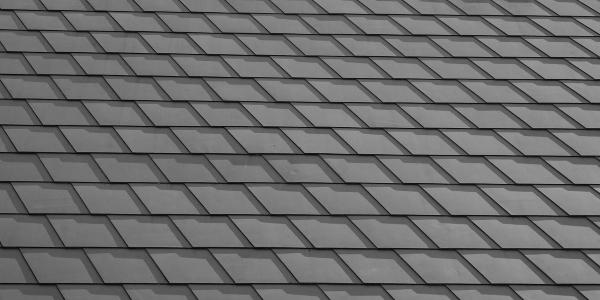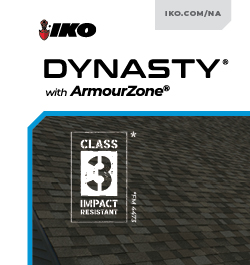Insulating smarter with polyiso
November 17, 2025 at 6:00 a.m.By Polyisocyanurate Insulation Manufacturers Association (PIMA).
High-performance insulation isn’t a luxury; it’s a line of defense against energy loss, equipment failure and costly spoilage.
When precision matters and temperatures drop, the right insulation makes all the difference. That’s why Polyisocyanurate Insulation Manufacturers Association (PIMA) is helping contractors across the country rethink how they build for cold storage. As energy costs rise and regulations tighten, facilities need more than just insulation; they need a solution that performs under pressure, seals out vapor and delivers long-term value.
In cold storage building design, even small temperature fluctuations can result in product spoilage, equipment damage or compliance violations. As a result, these facilities must adhere to strict industry regulations and food safety standards. Building code requirements increasingly call for specialized insulation solutions for cold storage building design, including higher R-values, vapor barriers and air-tight detailing of the building envelope.
So, what is the material used to insulate the building envelope of cold storage structures? Polyiso insulation can be used to insulate all six sides of a cold storage facility (walls, roof and below grade). In application, it delivers a high-performance thermal layer for the building envelope systems that helps optimize the cooling process, reduce energy demands and assist operators with maintaining precise interior temperatures.
Polyiso insulation offers high R-values for cold storage
Cold storage facilities typically operate 24/7, where any inefficiency in the thermal envelope can result in sustained energy loss and higher operating costs. With excellent thermal resistance, polyiso offers one of the highest R-values per inch compared to other insulation, allowing building teams to meet thermal performance targets with leaner assemblies.
Additionally, polyiso’s compressive strength (typically 16-25 psi) allows for cladding attachment to be installed outboard of the insulation. This capability can reduce the number of penetrations through the thermal layer and help to mitigate thermal bridging. The reduction of thermal bridges is especially important in cold storage facilities where a highly effective and continuous thermal boundary is essential to prevent unwanted heat gain.
Polyiso insulation serves as an air and vapor barrier
Polyiso's performance capabilities address other considerations that are a priority in cold storage facilities. Big or small, cold storage units often operate at a cooler temperature on the inside compared to the surrounding environment. This can make them vulnerable to vapor drive, which is when warm, moist air from the outside tries to move inward. When this air encounters a cold surface, it can condense into water droplets. Over time, this trapped moisture can lead to mold, corrosion, degradation and costly repairs.
Similarly, minor air leaks at transition points or penetrations in a cold storage building envelope can compromise temperature control, potentially leading to food spoilage, failed inspections or health code violations. That’s why precise detailing and continuous air barrier design is non-negotiable in cold storage building designs.
Polyiso’s closed-cell foam core makes it highly resistant to bulk water and vapor intrusion. It is also a multifunctional building solution. When sealed and taped per manufacturer’s instructions, polyiso can serve as a three-in-one thermal, air and water barrier in above-grade wall assemblies. As a result, it can address multiple performance requirements in cold storage applications.
Project profile – Cooler and freezer storage at Boise School District facilities
To optimize the learning and working environment and avoid unnecessary utility expenditures, the Boise School District in Idaho decided to convert about 3,600 square feet of existing outdoor space in its Facilities and Operations building into a cooler/freezer storage area. A unique design challenge involved the lower heated slab, which needed to discharge excess heat from the condensers into the soil below to prevent freezing over time. This required an insulation that could deliver high thermal resistance in a minimal thickness while also performing reliably in below-grade conditions.
The project team selected two layers of 2.25-inch polyiso below grade insulation by Rmax, which provided the required R-value (R-28.4) in a leaner profile. In application, its compressive strength of 25 psi helps resist significant amounts of pressure and weight from the soil, floor slab, buildings or other structures placed above it. Additionally, the closed-cell and closed matrix structure of polysio provides excellent moisture resistance, helping to maintain its thermal performance over time and reducing the risk of freeze-thaw damage.
Using polyiso insulation below grade, the team delivered a highly efficient, durable cold storage structure that meets the district’s operational needs while helping control energy use, safeguard stored goods and extend the life of the facility’s infrastructure.
Original article and photo source: Polyisocyanurate Insulation Manufacturers Association (PIMA)
Learn more about Polyisocyanurate Insulation Manufacturers Association (PIMA) in their Coffee Shop Directory or visit www.polyiso.org.














Comments
Leave a Reply
Have an account? Login to leave a comment!
Sign In